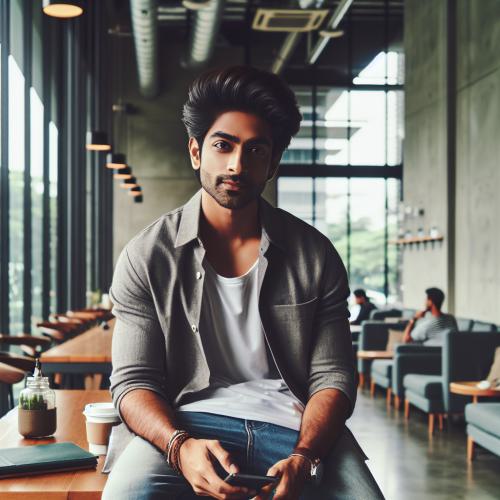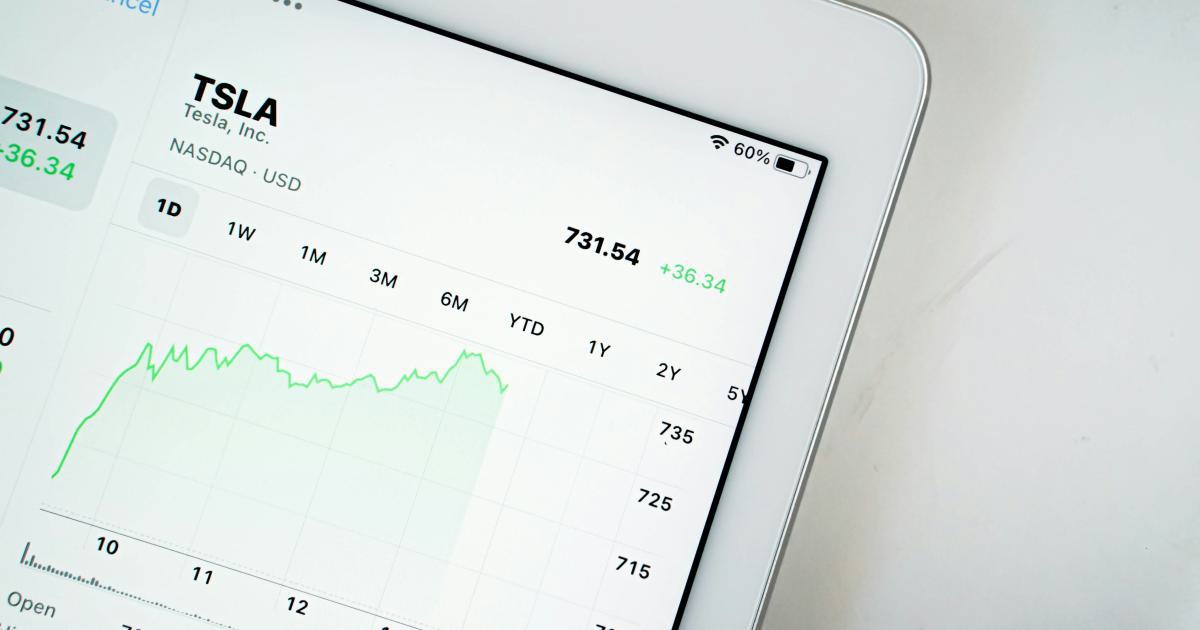5 Actionable Revenue Per Visit Metrics Strategies


Introduction: Unlocking the Power of Revenue Per Visit Metrics
In the dynamic world of digital marketing, understanding and optimizing revenue per visit (RPV) metrics is crucial for businesses seeking to maximize their online profitability. RPV is a key performance indicator (KPI) that measures the average revenue generated per website visit, providing invaluable insights into the effectiveness of your marketing campaigns, sales funnels, and overall customer engagement.

By focusing on revenue per visit metrics, you can uncover hidden growth opportunities, make data-driven decisions, and drive sustainable revenue growth. In this comprehensive article, we'll explore five actionable strategies that can help you leverage RPV metrics to their fullest potential.
Mastering the Fundamentals of Revenue Per Visit Metrics
Before delving into the strategies, it's essential to understand the core components of revenue per visit metrics. RPV is calculated by dividing the total revenue generated by a website or online business by the total number of visits or sessions.
RPV = Total Revenue / Total Visits
This metric provides a clear picture of the average monetary value each visitor brings to your business, allowing you to identify opportunities for optimization and improvement.

The Importance of Revenue Per Visit Metrics
Revenue per visit metrics offer a wealth of benefits for businesses of all sizes, including:
Optimizing Marketing Campaigns: By tracking RPV, you can determine the effectiveness of your marketing strategies, ad campaigns, and traffic sources, allowing you to allocate resources more efficiently.
Improving Customer Experience: Understanding RPV can help you identify friction points in your sales funnel and user experience, enabling you to enhance customer engagement and conversion rates.
Increasing Profitability: Optimizing RPV can directly translate to higher revenue and profitability, as you focus on attracting and retaining high-value customers.
Informing Business Decisions: RPV metrics serve as a valuable data point in your overall business intelligence, informing strategic decisions and resource allocation.
Factors Influencing Revenue Per Visit
Several factors can impact your revenue per visit metrics, including:
Traffic Source: Visitors from different channels, such as organic search, paid advertising, or social media, may have varying levels of engagement and purchase intent.
Product Mix: The types of products or services you offer, their pricing, and their perceived value can significantly influence RPV.
Conversion Rates: Higher conversion rates from visitor to customer directly contribute to increased RPV.
Average Order Value: The average value of each transaction or purchase made by your customers directly impacts your RPV.
User Experience: A seamless, user-friendly website and checkout process can enhance conversion rates and average order value, ultimately boosting RPV.
Understanding these key factors will help you develop targeted strategies to optimize your revenue per visit metrics.
Strategy 1: Segment and Analyze Your Traffic Sources
The first step in improving your revenue per visit metrics is to thoroughly analyze your website traffic sources. By segmenting and understanding the performance of different traffic channels, you can identify high-value sources and allocate resources accordingly.

Identifying High-Performing Traffic Channels
Start by breaking down your website traffic by source, such as organic search, paid advertising, referrals, social media, and direct. Examine the RPV for each channel to determine which ones are driving the highest revenue.
Consider factors like:
- Conversion Rates: How do the conversion rates differ across traffic sources?
- Average Order Value: Do certain channels attract customers with a higher average order value?
- User Engagement: Do visitors from specific sources exhibit stronger engagement, such as longer session duration or more pages per visit?
By identifying your top-performing traffic sources, you can prioritize and optimize these channels to drive even more revenue.
Optimizing Traffic Sources for Higher RPV
Once you've identified your high-performing traffic sources, focus on strategies to further enhance their revenue-generating potential:
Organic Search: Improve your SEO efforts to rank higher for keywords with strong commercial intent, and create content that aligns with user search queries.
Paid Advertising: Refine your ad targeting, messaging, and landing page optimization to attract more high-intent, high-value visitors.
Referral Traffic: Develop partnerships with relevant, high-authority websites to drive qualified referrals with a strong purchasing intent.
Social Media: Leverage social platforms to showcase your products or services, build brand awareness, and create engaging content that drives conversions.
Direct Traffic: Evaluate your branding, content marketing, and email campaigns to encourage repeat visits and direct engagement with your website.
By optimizing your traffic sources, you can steer more high-value visitors to your website, leading to a higher overall revenue per visit.

Strategy 2: Enhance Your Product and Pricing Strategy
Your product mix and pricing model can have a significant impact on your revenue per visit metrics. By carefully curating your offerings and optimizing your pricing strategy, you can unlock new opportunities for increasing RPV.
Analyze Your Product Portfolio
Evaluate your current product or service lineup to identify high-performing items that contribute the most to your overall RPV. Consider factors such as:
- Profit Margins: Prioritize products with higher profit margins, as they can drive greater revenue per visit.
- Average Order Value: Identify products that tend to have a higher average order value, either individually or when sold in bundles.
- Conversion Rates: Analyze which products have the highest conversion rates, indicating strong customer demand and intent.
Use this analysis to streamline your product portfolio, focusing on your most profitable and high-converting offerings.

Optimize Your Pricing Strategy
Your pricing strategy can have a significant impact on your revenue per visit metrics. Consider the following tactics to enhance your pricing model:
Dynamic Pricing: Implement a dynamic pricing model that adjusts prices based on factors such as demand, competition, and customer segmentation.
Bundling and Cross-Selling: Offer product bundles or complementary items to increase the average order value and drive higher RPV.
Tiered Pricing: Provide multiple pricing tiers with varying features and benefits, catering to different customer segments and their willingness to pay.
Prestige Pricing: Position select high-end products or services at a premium price point to attract customers seeking exclusivity and perceived value.
Subscription Models: Explore recurring revenue streams through subscription-based offerings, which can provide a more stable and predictable RPV.
By optimizing your product portfolio and pricing strategy, you can create a more compelling value proposition for your customers, ultimately leading to higher revenue per visit.

Strategy 3: Improve Your Customer Conversion and Retention Rates
Conversion rates and customer retention are critical components of revenue per visit metrics. By focusing on enhancing these areas, you can drive more revenue from each website visitor.
Optimize Your Sales Funnel and Conversion Rates
Examine your sales funnel to identify and address any friction points that may be hindering customer conversions. Implement the following tactics to boost your conversion rates:
Enhance User Experience: Ensure your website is mobile-friendly, visually appealing, and easy to navigate, with a seamless checkout process.
Personalize the Customer Journey: Use data-driven personalization to tailor the user experience based on customer preferences, browsing behavior, and purchase history.
Implement Effective Calls-to-Action: Strategically place compelling CTAs throughout your website to encourage visitors to take desired actions, such as making a purchase or signing up for a newsletter.
Leverage Social Proof: Showcase customer reviews, testimonials, and social media engagement to build trust and credibility, which can positively impact conversion rates.
A/B Test and Optimize: Continuously test and refine different elements of your website, such as landing pages, product descriptions, and checkout processes, to identify the most effective approaches.

Enhance Customer Retention and Loyalty
Retaining customers is crucial for maintaining a stable and growing revenue per visit. Focus on the following strategies to improve customer retention and lifetime value:
Deliver Exceptional Customer Service: Ensure your team is responsive, knowledgeable, and committed to resolving customer issues promptly.
Implement Loyalty Programs: Offer incentives, such as rewards, discounts, or exclusive access, to encourage repeat business and customer loyalty.
Engage Customers with Personalized Content: Create targeted email campaigns, relevant blog posts, and personalized product recommendations to keep customers engaged and interested in your brand.
Foster a Strong Brand Identity: Develop a distinct brand personality, visual identity, and authentic messaging to build an emotional connection with your customers.
Leverage Customer Feedback: Actively gather and respond to customer feedback, using it to improve your products, services, and overall customer experience.
By optimizing your conversion rates and enhancing customer retention, you can drive more revenue from each website visit, leading to a higher overall RPV.

Strategy 4: Utilize Advanced Analytics and Reporting
Leveraging advanced analytics and reporting tools can provide a deeper understanding of your revenue per visit metrics, enabling you to make more informed, data-driven decisions.
Implement Comprehensive Analytics Tracking
Ensure that you have a robust analytics platform, such as Google Analytics or Adobe Analytics, properly installed and configured on your website. This will allow you to capture a wealth of data, including:
- Traffic Sources: Understand the performance of different traffic channels and their contribution to RPV.
- Visitor Behavior: Analyze user engagement, such as pages per visit, bounce rates, and average session duration.
- Conversion Rates: Track the performance of your sales funnel, from initial visits to completed transactions.
- Revenue Metrics: Monitor your overall revenue, average order value, and revenue per visit.
By having a comprehensive analytics setup, you can gain valuable insights to guide your optimization efforts.

Leverage Detailed Reporting and Dashboards
Develop custom reporting and dashboards to visualize your revenue per visit metrics and gain a deeper understanding of your performance. Consider the following reporting elements:
RPV Trends: Track your revenue per visit over time to identify patterns, seasonal fluctuations, and the impact of your optimization efforts.
Segment-Based RPV: Analyze RPV for different customer segments, traffic sources, and product categories to uncover opportunities for targeted optimization.
Cohort Analysis: Examine the behavior and revenue contribution of different customer cohorts, such as new vs. returning visitors, to inform your retention strategies.
Performance Benchmarking: Compare your RPV metrics against industry benchmarks or competitors to assess your relative performance and identify areas for improvement.
Predictive Analytics: Utilize predictive modeling to forecast future revenue per visit and make more informed strategic decisions.
By leveraging advanced analytics and reporting, you can gain a comprehensive understanding of your revenue per visit metrics and make data-driven decisions to drive sustainable growth.

Strategy 5: Implement Continuous Optimization and Testing
Improving your revenue per visit metrics is an ongoing process that requires a culture of continuous optimization and testing. By embracing a data-driven, iterative approach, you can consistently identify and implement strategies to enhance your RPV.
Adopt a Structured Testing Methodology
Implement a structured testing methodology, such as the LEAN or RACE frameworks, to systematically approach optimization efforts. This typically involves the following steps:
Research: Gather data, analyze customer behavior, and identify potential areas for improvement.
Hypothesize: Develop educated hypotheses about changes that could lead to RPV increases.
Design and Implement: Create and deploy the necessary changes, such as website updates or marketing campaigns.
Evaluate: Measure the impact of your changes on RPV and other key metrics.
Scale and Iterate: Implement successful optimizations, learn from failures, and repeat the process.
By following a structured approach, you can ensure that your optimization efforts are data-driven, measurable, and consistently yield improvements to your revenue per visit metrics.

Foster a Culture of Experimentation
Encourage a culture of experimentation within your organization to support ongoing RPV optimization. This includes:
Empowering Cross-Functional Collaboration: Bring together teams from marketing, sales, product, and analytics to contribute ideas and insights.
Celebrating Failures: Embrace a learning mindset and recognize that not all experiments will succeed, but each one provides valuable lessons.
Allocating Resources for Testing: Dedicate time and budget for A/B testing, multivariate experiments, and other optimization initiatives.
Communicating Results: Share the outcomes of your optimization efforts, both successes and failures, to foster transparency and continuous improvement.
Recognizing and Rewarding Progress: Acknowledge and reward team members who contribute to RPV improvements, reinforcing the value of optimization.
By fostering a culture of experimentation and continuous improvement, you can ensure that your revenue per visit metrics are consistently optimized, leading to long-term sustainable growth.

Conclusion: Unlocking the Full Potential of Revenue Per Visit Metrics
In the dynamic world of digital marketing, revenue per visit metrics serve as a powerful tool for businesses seeking to maximize their online profitability. By implementing the five strategies outlined in this article, you can unlock the full potential of your RPV metrics and drive sustainable revenue growth.
Remember, optimizing revenue per visit is an ongoing process that requires a data-driven, iterative approach. By continuously analyzing your traffic sources, enhancing your product and pricing strategies, improving conversion and retention rates, leveraging advanced analytics, and fostering a culture of experimentation, you can consistently identify and implement the most effective tactics to boost your RPV.
Embrace the power of revenue per visit metrics and embark on a journey of data-driven optimization. The rewards of higher profitability, better customer experiences, and long-term business success await those who master this critical KPI.